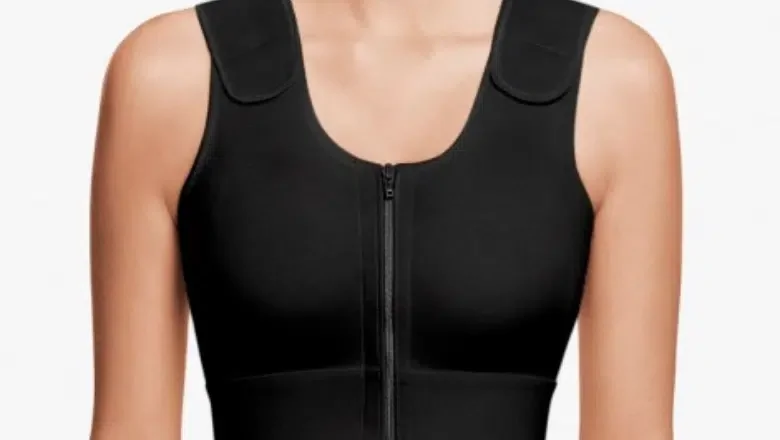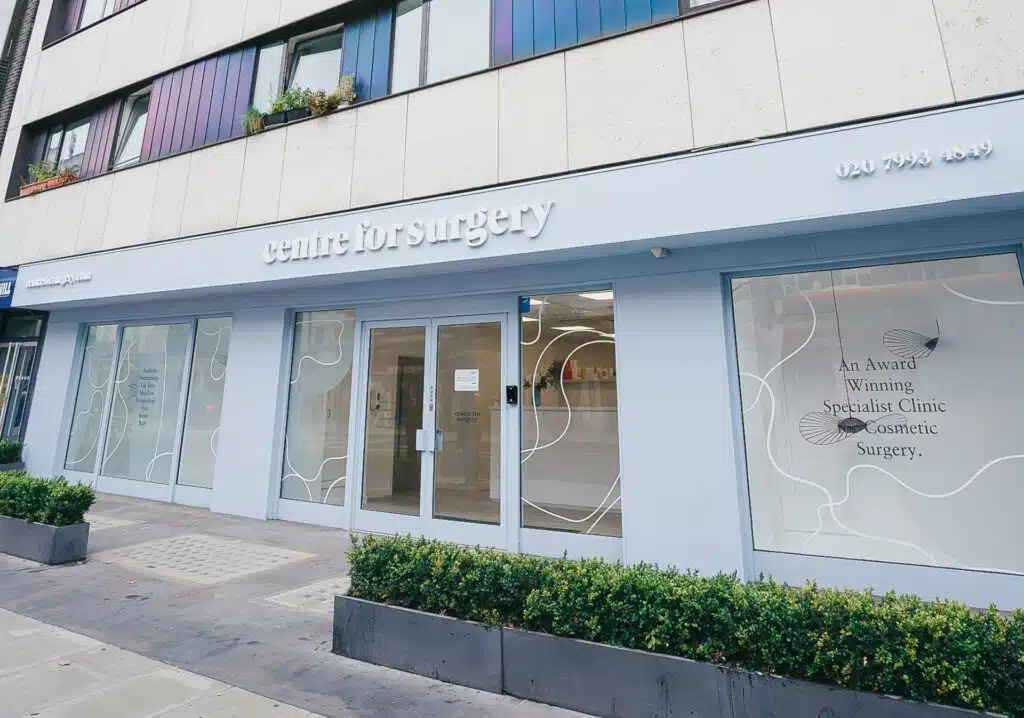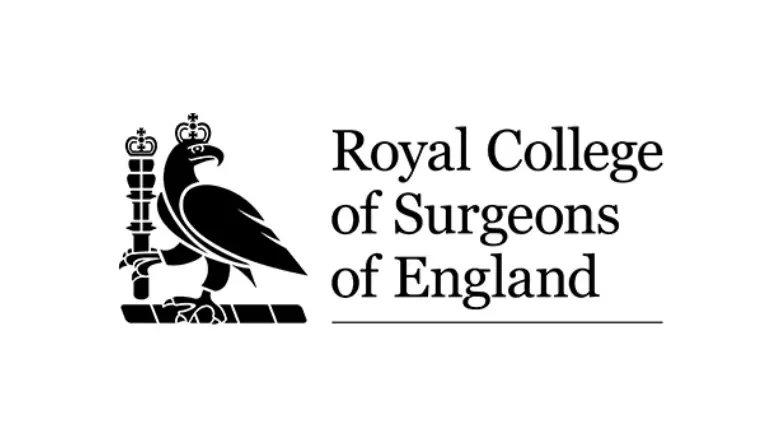Why You Should Definitely Wear Supportive Garments After Breast Surgery
If you’ve just had breast surgery, whether it’s a breast reduction, breast lift, or any other type, it’s essential to wear the right kind of supportive garments afterwards. We’re talking about special bras and vests made just for this purpose. These aren’t your everyday undergarments; they’re specially made to help you in a lot of ways after your surgery.
So, why are these garments so crucial? Well, they offer a whole host of benefits. First off, they give your breasts the support they need during the time they’re healing. This is vital because it helps to improve blood flow in the area, which is a big help in reducing swelling. They also provide constant, gentle pressure on the area where you had surgery, which aids in the healing process. Plastic surgeons highly recommend this kind of support for good reasons.
These post-surgery bras and vests come in different types, each designed for specific needs. You’ve got surgical bras, sports bras, and even special vests. All these options mean you can choose the best fit for your unique recovery journey.
At Centre for Surgery in London, we believe that the patient’s experience doesn’t end the moment the surgery is over. We care about your whole journey, including your recovery period. Our surgeons always recommend these supportive garments to help make your post-surgery time as smooth as possible.
RELATED: Benefits of Wearing A Compression Garment After Cosmetic Surgery
What Are Breast Compression Garments?
Breast compression garments are special types of clothing designed to give extra support and apply a gentle pressure to your breast area. Unlike regular bras or vests, these garments are engineered to serve specific medical and healing purposes, often recommended after surgical operations on the breasts.
RELATED: Support Garments After Breast Surgery – Top Tips For a Smoother Recovery
Why are they so special? First and foremost, they help improve blood flow around your breast area. Good circulation is essential for healing, so that’s a big plus. Next, they work wonders in reducing swelling, a common issue people face after surgery. By minimising this, these garments help in faster recovery. Lastly, the consistent pressure these garments provide aids overall healing. This is particularly beneficial after surgical procedures like breast reductions, augmentations, lifts, or reconstructions.
So, whether you’ve had a surgical intervention or you need added breast support for other medical reasons, compression garments can play a key role in making your recovery more comfortable and practical.
Types of Breast Compression Garments: An In-Depth Look
When it comes to breast compression garments, there’s not a one-size-fits-all approach. Different types serve various needs and purposes, and it’s crucial to choose the right one for your situation. Here’s a more detailed look at the kinds of breast compression garments available and what they’re designed to do:
Surgical Bras
After surgeries like breast augmentation, reduction, lift, or reconstruction, surgical bras are often the go-to choice. These bras are designed to provide crucial post-operative support to the breasts, minimise unnecessary movement, and help manage swelling and discomfort. Surgical bras typically feature front closures for easy accessibility, soft materials for comfort, and adjustable straps for a custom fit. All this is done to expedite your healing process and make your post-operative journey as smooth as possible.
Sports Bras
Sports bras are your best bet if you’re engaging in physical activities. They’re created to provide excellent support during intense exercises, minimise bounce, and thereby prevent discomfort or pain. These bras often incorporate advanced materials that wick away moisture, ensuring you remain comfortable even during high-energy activities. The materials are usually stretchy yet secure, allowing for a range of movement without sacrificing support.
Compression Vests or Binders
Sometimes, you might need support that extends beyond just the breast area. That’s where compression vests or binders come in. Often recommended for use after surgery or for individuals who need extra upper body support, these garments offer a uniform compression level across your entire upper torso. This includes not just the breasts, but also areas like the chest wall and upper back. This all-over support and stability benefit post-operative patients or those with medical conditions requiring more comprehensive upper body support.
How Do Breast Reduction Compression Garments Function?
The effectiveness of breast compression garments largely hinges on their unique design and the materials from which they’re made. Let’s delve into how these special garments work:
Controlled Pressure
One of the primary features of these garments is that they apply a carefully measured amount of pressure on your breast tissue. This is not arbitrary; it’s designed to be just enough to serve its purpose without causing discomfort or harm.
Enhanced Blood Circulation
The controlled pressure from the garment promotes better blood flow to the breast area. Good circulation is crucial for any healing process. It not only brings oxygen and nutrients to the surgical or affected site but also helps remove waste products.
Swelling and Inflammation Reduction
Increased blood flow also helps reduce swelling and inflammation, two common side effects after any surgical intervention or injury. This, in turn, can accelerate the overall healing process, making your recovery period more comfortable and possibly shorter.
Toxin Removal
With better blood flow, the body is more efficient at flushing out toxins and waste materials. This contributes to a cleaner healing environment, which can be vital for preventing complications such as infections.
Support and Limited Movement
Breast compression garments provide the necessary support to the breast tissue, effectively limiting excessive or unwanted movement. This is particularly beneficial post-surgery, as it helps to prevent any strain or potential damage to the healing tissue. Keeping the breast area stable minimises risks and facilitates a smoother recovery.
Material Matters
These garments are often made from high-quality, breathable, stretchable, and gentle fabrics on the skin. This adds to the comfort factor, making it easier to wear them for extended periods, which is often required for optimal healing.
When Should You Wear Breast Compression Garments?
Breast compression garments aren’t just for one specific use; they serve multiple purposes across different situations. Here are the key scenarios where these garments can be beneficial:
After Surgery
This is the most common and often the most critical use of breast compression garments. Following procedures like breast augmentation, reduction, lift, or reconstruction, these garments are highly recommended to aid in the recovery process. They help manage post-operative symptoms like swelling and discomfort, and importantly, they reduce the risk of complications such as seromas or infections.
During Physical Activities
If you’re someone who’s active and regularly engages in sports or exercise, a specially designed sports compression bra can be extremely beneficial. The garment will provide the necessary support to minimise breast movement, which can otherwise lead to discomfort or even tissue damage over time. Given that sports bras are also designed to handle sweat and heat, they can be a comfortable and supportive choice during physical exertion.
For Specific Health Conditions
Wearing a compression garment may be advisable even if you haven’t had surgery. Conditions like lymphedema, which involves swelling due to a lymphatic system blockage, can benefit from the controlled pressure and improved circulation of these garments. Similarly, if you experience back pain due to large breasts, a compression garment can offer much-needed relief by redistributing the weight and providing better support.
The History and Evolution of Breast Compression Garments
Using pressure to aid in healing and support isn’t new. In fact, it dates back to ancient civilisations that used bandages to support injured or operated body parts. However, the focus on specifically designing compression garments for breasts is a much more recent phenomenon, and it has a fascinating history worth exploring.
Early Beginnings
In the late 19th century, we saw the advent of the modern bra, evolving from uncomfortable and restrictive corsets to designs that aimed for practicality and comfort. While these early bras weren’t created with medical applications in mind, they laid the groundwork for what would become medical compression garments.
Medical Compression Garments Emerge
In the early to mid-20th century, the medical field began to take an interest in specialized garments designed for post-operative care. These early medical compression garments were utilitarian in nature: They did a fair job of reducing swelling and aiding the healing process after surgeries, but they often lacked comfort and aesthetic appeal. However, they represented the start of a focused approach to post-surgical breast care.
The Fitness Revolution
The 1970s and 1980s saw a fitness boom, and with it came the demand for garments that could support the breasts during high-impact activities. Enter the sports bra, a garment that was a game-changer for active women. While not explicitly designed for post-surgical recovery, the sports bra added a new dimension to breast compression garments. It showed that such clothes could be both functional and comfortable, inspiring later innovations in medical compression garments as well.
Modern Advances
Fast-forward to today, and you’ll find that breast compression garments have become incredibly sophisticated. Not only are they medically efficient, but they’re also designed with patient comfort and aesthetics in mind. You’ll find various types to suit different needs—surgical bras for post-operative care, sports bras for active lifestyles, and even specialised garments for particular medical conditions.
Modern Innovations in Breast Compression Garments
The landscape of breast compression garments has transformed remarkably thanks to modern technological, design, and materials innovations. These improvements have made these garments more efficient in their core functions and significantly more comfortable and aesthetically appealing. Here’s a closer look at some of the key advancements:
Advanced Material Technology
One of the most notable innovations has been in the fabric technology. The introduction of materials like spandex and advanced microfibres has revolutionised how these garments feel and function. These fabrics offer breathability, controlled compression, and moisture-wicking capabilities while extremely durable. This is a far cry from the early, less comfortable materials and ensures that modern compression garments can be worn for extended periods without discomfort.
Smart Compression
Thanks to cutting-edge technology, we now have ‘smart’ compression garments that can adapt their compression levels based on the wearer’s activities or movements. This means that whether you’re sitting, standing, or engaging in physical exercise, the garment adjusts itself to provide optimal support. This level of adaptability was unthinkable in the earlier versions of these garments.
Personalised Fit
One of the challenges with any piece of clothing, especially one designed for medical or athletic use, is ensuring a proper fit. Modern innovations have addressed this issue head-on. Today’s compression garments come with adjustable straps, a variety of closure options, and multiple cup sizes, allowing for a highly personalised fit. This means every woman can find a garment tailored to her needs and body shape.
Aesthetic Advancements
Gone are the days when medical compression garments were purely utilitarian and lacked any sense of style. Today, these garments are designed to be both functional and fashionable. They are available in a variety of styles, colours, and patterns, making it easier to incorporate them into your daily wardrobe without compromising on aesthetic appeal.
These modern innovations signify a significant leap forward in breast compression garments, aligning functionality with comfort and style. The result is a range of options that cater to diverse needs while also enhancing the wearer’s overall experience.
Debunking Myths and Misconceptions About Compression Garments for Breasts
When it comes to compression garments for breasts, misinformation abounds. Here are some common myths and misconceptions, along with the facts that debunk them:
Myth 1: Compression Garments Are Always Uncomfortable
Fact:
This myth probably hails from the earlier days when compression garments were not as advanced as they are now. Today, thanks to progress in fabric technology and design, these garments are created with user comfort as a priority. Materials are chosen for their breathability, softness, and flexibility, ensuring that the garment can provide the necessary support without sacrificing comfort.
Myth 2: Prolonged Use Can Be Harmful
Fact:
Compression garments are specifically engineered to apply a measured amount of pressure that is beneficial for blood circulation and tissue support. Provided the garment is well-fitted and used as directed, there should be no harm in wearing it for extended periods. Of course, it’s always good to consult with healthcare professionals for personalized advice.
Myth 3: They’re Only for Post-Surgery Recovery
Fact:
While it’s true that these garments are often recommended for recovery after breast surgeries, their utility goes beyond just that. They are frequently used in sports and other physical activities to reduce uncomfortable breast movement. Additionally, some individuals find relief from specific health conditions, such as lymphedema or back pain from large breasts, by wearing these garments.
Myth 4: They Will Reduce Breast Size Over Time
Fact:
Compression garments are not a means of permanently altering breast size. They are designed for temporary support and shaping, but they don’t have a lasting impact on the size of the breast tissue.
RELATED: Can Your Breasts Grow Back After Breast Reduction Surgery?
What to Think About When Buying Compression Garments After Breast Reduction
Picking out the perfect compression garment for your post-breast reduction needs involves a lot more than simply selecting something off the shelf. Several factors must be taken into account to ensure you end up with a garment that suits your needs while offering comfort and durability. Here’s a guide to help you make an informed decision:
Choosing the Correct Fit and Material
Size Matters
The right fit is crucial. A garment that’s too tight could restrict blood flow, causing discomfort or even complications. On the flip side, a loose-fitting garment won’t provide the support needed for effective healing. Make use of the sizing charts often offered by manufacturers, and don’t hesitate to try multiple sizes to find that perfect fit.
Style for Purpose
The style of your compression garment should be based on its intended use. If it’s for post-operative care, then a surgical bra would be most suitable. For exercise and physical activities, go for a sports bra. And for broader upper body support, a compression vest or binder may be the right choice.
Material Considerations
The fabric plays a big role in your comfort and the garment’s effectiveness. You’ll want a material that’s breathable, stretchable, and durable. Moisture-wicking material is ideal for those who will be active. If you’re in the post-surgical stage, softer, seamless fabrics may be more comfortable.
Price Versus Quality
It’s natural to be budget-conscious, but remember that this is an investment in your health. High-quality compression garments may carry a higher price tag, but their long-term benefits in terms of comfort, durability, and functionality often make them worth the cost. Rather than just seeking the cheapest option, aim for a garment that offers genuine value for money.
Top Tips for Comfortably Wearing Your Compression Garment After Breast Reduction Surgery
Wearing a compression garment post-surgery can be an unfamiliar experience, but there are ways to ensure you are as comfortable as possible during your recovery. Here are some practical tips:
Choose the Right Fit:
The first and foremost tip is to ensure the garment fits you perfectly. An ill-fitting garment can not only be uncomfortable but may also interfere with your healing. Your healthcare professional or surgeon can guide you in choosing the right size and fit.
Take Short Breaks:
Wearing your compression garment continuously is vital for your recovery, but taking short breaks can offer some respite. Always follow your doctor’s advice regarding how often and for how long you can remove the garment.
Maintain the Garment Properly:
Keeping your compression garment clean is essential to avoid any skin issues such as irritation or infection. While many compression garments can be machine washed, checking and following the manufacturer’s cleaning instructions is crucial. Improper cleaning can damage the garment’s material and reduce its effectiveness.
Consider Layering:
If the compression garment’s fabric feels rough against your skin, you might consider wearing a thin, breathable layer of fabric underneath it. This can add an extra level of comfort without compromising the garment’s effectiveness.
Check for Wear and Tear:
These garments are designed to withstand daily use but have a lifespan. Regularly inspect the garment for signs of wear and tear, and replace it if needed. A worn-out garment may not provide the required compression level and could be uncomfortable.
Adjust as Needed:
Your body will change as it heals. As your needs change, you may need to adjust the garment or even switch to a different size or style. Consult your surgeon for advice on when it might be appropriate to make these changes.
Risks of Not Wearing Compression Garments After Breast Reduction Surgery
The use of compression garments is often strongly advised by healthcare professionals, especially following breast reduction surgeries. Ignoring this advice can result in several complications and can slow down your healing process. Here’s a breakdown of the key risks involved if you decide not to wear compression garments:
Haematoma Dangers:
Haematomas, or areas of swelling filled with blood, are another potential risk after surgical procedures. Compression garments can mitigate this risk by constricting blood vessels, which helps to minimise bleeding.
Risk of Seroma:
Seromas are pockets of clear fluid that may develop after a surgical procedure. Compression garments can reduce the risk of seroma formation by encouraging fluid drainage and lessening the chance of empty spaces where fluid might collect.
Excessive Swelling:
Compression garments reduce swelling by applying even and consistent pressure on the operated area. If these aren’t used, you might experience increased swelling, which can cause discomfort and slow the healing process.
Delayed Healing:
Choosing not to wear compression garments could extend the duration of your recovery period. The garments have multiple benefits, such as reducing swelling, aiding in skin retraction, and minimising the risks of seromas and haematomas. All of these contribute to a quicker and smoother healing process.
Uneven Skin Retraction:
Post-breast reduction, your skin needs to adapt to the new shape and size of your breasts. Compression garments assist in this adaptation, ensuring that the skin fits well to the new contours. Without these garments, the skin may not retract evenly, affecting the overall aesthetic result.
Increased Discomfort:
Though they may feel a bit uncomfortable initially, compression garments actually enhance your comfort levels during the recovery phase. They manage swelling and support the newly operated areas, thus making the healing process less painful and more manageable.
RELATED: Breast Reduction Complications – Reducing Risks of Surgery
Frequently Asked Questions about Using Compression Garments After a Breast Reduction
Do I have to keep the compression garment on while I sleep?
Yes, it’s usually best to keep your compression garment on 24/7, including when you’re sleeping. The steady pressure helps to lessen swelling and speeds up the healing of your tissues. But listen to your doctor’s advice: they might tell you it’s okay to take it off for a bit, maybe when you shower or take a quick break.
Will the compression garment hurt?
Initially, you might feel that the compression garment is a bit snug or not super comfortable, but it shouldn’t actually hurt. It’s designed to provide solid support without making you feel bad. If you are in pain or feel ongoing discomfort, you should talk to your healthcare team. This could mean that you’ve got the wrong size or another problem needs looking at.
When can I switch back to my normal bra?
When you can go back to wearing your regular bra depends on how you’re healing. Usually, your doctor will tell you to wait for a few weeks. This is because you’ll need to wait until most of the swelling has gone down and you’re healing well. It’s crucial not to hurry this, as a regular bra could put pressure on areas that are still delicate, leading to more discomfort or complications.
How do I clean the compression garment?
Most compression garments are easy to care for because they can be put in the washing machine. However, make sure to follow any specific instructions that come with them. This usually means washing it gently and then letting it air dry. Avoid using a tumble dryer, as high heat can damage the garment’s stretchy material and make it less effective.
When can I stop using the compression garment?
How long you’ll need to wear your compression garment depends on a few things: your operation, how your body is healing, and what your surgeon recommends. Often, you’ll need to wear it for several weeks after the operation. Your surgeon will give you personalised advice on when you can start easing off and eventually stop using it. Always remember, the main reason for wearing this is to help you heal properly.
Why Choose Centre for Surgery for Your Cosmetic and Plastic Surgery Needs?
At Centre for Surgery, we’re not just another clinic; we’re a comprehensive healthcare facility dedicated to providing unparalleled service in plastic and cosmetic surgery. From the moment you walk into our clinic at 95-97 Baker Street in London, you will feel the difference—a welcoming environment, friendly staff, and a surgical team committed to patient care of the highest standard.
Cutting-Edge Facilities and Expertise
Our state-of-the-art facility is equipped with the latest medical technology, ensuring that you receive the safest and most effective treatment possible. With a team of highly qualified and experienced surgeons, we offer a range of services, from breast augmentation and reduction to facelifts and liposuction.
Individualised Care
We recognise that each patient is unique, so our consultations are designed to address your specific needs and desired outcomes. Our surgeons take the time to understand your medical history, lifestyle, and cosmetic goals before recommending a treatment plan tailored just for you.
Patient Testimonials
- Sarah: “I had a breast reduction done at Centre for Surgery, and I can’t express enough how fantastic the whole experience was. The staff were incredibly attentive and the surgeon made me feel at ease throughout the entire process. Highly recommend!”
- Karen: “I was skeptical about getting a facelift, but the experts at Centre for Surgery walked me through every step. I felt confident and well-cared-for during my entire journey.”
- Emily: “From the receptionists to the nursing staff and surgeons, everyone made me feel welcome and secure. The results of my liposuction exceeded all my expectations.”
Easy and Convenient Consultation Booking
Scheduling a consultation with us is a straightforward process. For your convenience, we offer multiple channels to get in touch with us:
- 📞 Phone: You can call us at 0207 993 4849 to book your consultation. Our friendly staff will guide you through the booking process and answer any preliminary questions you may have.
- 📧 Email: Feel free to email us at contact@centreforsurgery.com for any queries or to request a callback.
- 📍 Address: Our clinic is conveniently located at 95-97 Baker Street, London W1U 6RN. You can drop by to make an in-person appointment if you prefer.
Regarding your health and appearance, don’t settle for anything less than the best. Choose Centre for Surgery for a truly exceptional and personalised healthcare experience.
Contact us today to book your consultation and take the first step towards a more confident you.











